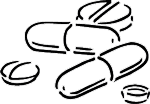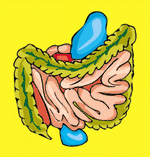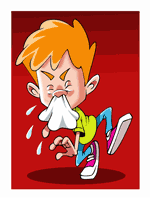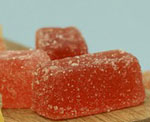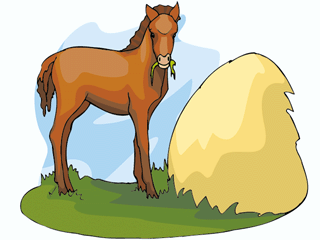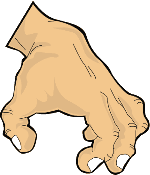Cleaning with Vinegar
Best Tips
"Finally a site with so many 'READY TO USE'
vinegar cleaning solutions!"
Cleaning with vinegar is a great way to avoid exposure to many hazardous commercial household cleaners and it's cheaper, safer and easier on the environment.
The cheaper distilled white vinegar, available at your local supermarket, is the best type to use for cleaning. The acetic acid in vinegar is an effective disinfectant, deodorizer, and cleaner which will cut grease and soap scum, dissolve mineral buildup, and inhibit mold and bacteria growth.
For the household, a number of time-honored vinegar cleaning recipes are included some of which require, for best results, the addition of other readily available non-toxic ingredients such as:
- Salt - to help dissolve tarnish.
- Baking soda - to absorb odors and act as a mild abrasive.
- Hydrogen Peroxide - to help disinfect.
Caution: Do not add vinegar directly to materials containing ammonia since this could produce harmful vapors.
Coffee Maker - Cleaning with Vinegar
Over time, mineral deposits from the water you use, build up and clog your coffee maker. Cleaning coffee makers with vinegar once a month will dissolve these deposits and will also allow you to wipe clean accumulated coffee stains.
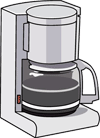
For a regular 12 cup coffee maker:
- Add 1 cup (250 ml) of warm water to the water reservoir followed by 2 cups (500 ml) of white vinegar, then run the coffee maker through a brewing cycle.
- Discard the vinegar solution and clean thoroughly with water.
- Run the coffee maker 2 more times through the brewing cycle with just plain water to rinse out all the vinegar.
By cleaning your coffee maker regularly, you will not only get rid of clogging mineral deposits,
you will also eliminate coffee oils that can accumulate inside your coffee maker and become rancid.
There is no doubt about it, a clean coffee maker will produce a better tasting coffee!
Copper Pennies - Cleaning with Vinegar
A popular science fair project for public and junior high students is to find and evaluate household products that can restore the shine to dull copper pennies.
 A copper penny looses its bright original shine because with time, the copper metal on
the surface of the penny reacts with the oxygen in the air to form a dull brown copper
oxide tarnish.
A copper penny looses its bright original shine because with time, the copper metal on
the surface of the penny reacts with the oxygen in the air to form a dull brown copper
oxide tarnish.Cleaning with vinegar is a way to restore the shine on dull pennies. The acetic acid in
vinegar dissolves the copper oxide layer on the surface of the coin thus exposing the
bright copper metal underneath.
The reaction occurs much quicker if you add a little salt to the vinegar so try the
following cleaning solution:
- ½ cup (125 ml) Vinegar
- 1 teaspoon (5 g) Salt
Another natural cleaning product that can be used is ketchup. That's not surprising once you read the label on the bottle which shows that salt and vinegar are major ingredients in ketchup.
Don't use vinegar to clean valuable or collectible copper coins since this dissolves some of the copper, which is the same thing as increasing the wear on the coin and thus reducing its value.
Electric Shaver - Cleaning with vinegar

The newer electric shavers are normally cleaned by rinsing the shaving head and hair chamber daily with hot water, once the shaver has been turned off and the power plug removed from the wall socket.
This procedure works well but it does not remove any odor which generally builds up on the shaver over time.
To eliminate this odor, simply rinse the shaving head and hair chamber with a dilute vinegar solution before rinsing with water.
A 0.5% vinegar solution works well and it can be prepared by mixing 1 part normal household vinegar with 10 parts tap water.
So, for an oder free shaver, rinsing once or twice a month with this dilute vinegar solution will do the job.
Clothes washing and drying - Cleaning with Vinegar
When cleaning clothes, instead of adding a fabric softener sheet to the dryer, use a vinegar/water liquid fabric softener in the washing machine.
- To the liquid fabric softening dispenser in your washing machine, add 1/2 cup (125 ml) of white vinegar and then top up the reservoir with tap water.

Besides saving you money and reducing the amount of chemicals you add to the environment you will reduce the amount of lint that your dryer's lint filter catches, and your towels will be more absorbent because they wont be coated with chemicals from the fabric softening sheet.
You will also be making the drying operation safer since vinegar, unlike fabric softener sheets, will not leave a waxy film on the lint filter which could, over time, restrict airflow from the dryer and cause overheating.
- To check out your dryer's filter, remove the accumulated lint as you would normally do after each dryer cycle, and then place a little water on the filter. If the water doesn't go through it easily then it needs to be cleaned with a small brush dipped in vinegar.
If you want to do away with both fabric softener sheets as well as liquid fabric softener, then you could use Wool Dryer Balls. They are made of natural fabric, are reusable (about 1,000 loads of laundry), quiet, and will reduce your energy usage by shortening drying time.
(To buy them, click on the Amazon picture or link below. I will earn a small commission, at no cost to you.)
For those who prefer scented laundry, you can add a few drops of essential oils such as lavender or orange to your dryer balls before adding them into the laundry.
Clothes Iron - Cleaning with vinegar
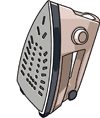
If you live in an area where the water supply contains a lot of minerals, then over time, these minerals can clog your iron's fine steam pores reducing the steam output to just a trickle.
- Fill up the iron's water reservoir with pure white vinegar and then place it face down on a metal cookie rack.
- Let the iron run on the steam setting until the reservoir is empty. The steam pores should now be perfectly clean.
- Refill the reservoir with water and you're good to go.
Drains - Cleaning with Vinegar
A) For partially blocked drains:
Try this home drain cleaner to clean, deodorize and unclog partially blocked drains in the kitchen or bathroom:
- ½ cup (125 ml) Baking Soda
- ½ cup (125 ml) Table Salt
- ½ cup (125 ml) White Vinegar
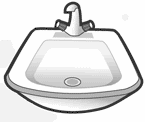
Mix the baking soda and salt in a small bowl and pour the powder into the drain.
Next pour in the vinegar. A frothy foam will be produced as the vinegar reacts with the
baking soda to give off harmless carbon dioxide gas.
After 2 or 3 hours flush the drain with very hot water.
B) Preventative maintenance:
To help prevent drain clogs from occurring in the fist place, every 3 months, pour a cup (250 ml) of white vinegar down the drain then 10 minutes later flush with hot water.
If you grind your own coffee beans, flushing these down the drain periodically will also help prevent clogging.
Hardwood Floors - Cleaning with Vinegar
Cleaning regular hardwood floors with vinegar or polyurethane-coated hardwood floors can be easily accomplished with the following solution:
- 1 cup (250 ml) white vinegar
- 1 gallon (3.8 L) warm water
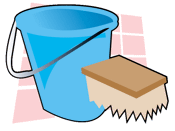
Fill a bucket with the warm water then mix in the vinegar.
Damp-mop the floor using as little of the solution as possible then dry with paper or cloth
towels. Avoid leaving excess water on the floor that could work its way into small
openings and cause the wood to swell and crack.
An alternative procedure would be to fill up a plastic spray bottle with the vinegar
cleaning solution and spray it on the floor. Then dry with a terry cloth mop or with paper
towels.
Other types of floors such as vinyl or ceramic can also be cleaned with this same simple
vinegar solution.
Kitchen Cutting Boards and Countertops - Cleaning with Vinegar
The best way to sanitize kitchen food preparation surfaces such as countertops and wood cutting boards is to use the following vinegar and hydrogen peroxide germ-killing combo:
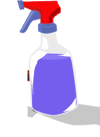
- Using a spray bottle, apply undiluted apple cider vinegar or white vinegar to the kitchen surface to be cleaned.
- Then immediately spray the same area with 3 percent hydrogen peroxide (available in all drugstores) from another spray bottle.
- Wipe the area clean or rinse with water.
According to Susan Sumner, a food scientist at Virginia Polytechnic Institute and State University, it does not matter whether you spray the vinegar before or after the hydrogen peroxide, the effect is the same, it kills virtually all Salmonella, Shigella, or E. Coli bacteria on heavily contaminated food preparation surfaces.
She also found that using both sprays was 10 times more effective than using either spray by itself and more effective than chlorine bleach and all other commercially available kitchen cleaners.
The vinegar / hydrogen peroxide sprays also work well to clean meats, fruits and vegetables of disease-causing germs.
Reference:
Science News Online - Food for Thought - 9/28/96
Odor Removal - Cleaning with Vinegar
Besides controlling body odor (such as underarm or foot odor) and eliminating pet odor (including skunk odor ), cleaning with vinegar can
Vinegar works by killing the bacteria that cause odors and by neutralizing many of the basic volatile compounds that are responsible for harsh or unpleasant smells.
Try out some of these examples and see for yourself how efficient and inexpensive cleaning with vinegar can be:
- Onion or fish odor can be removed from your hands by wiping them with vinegar.
- Cabbage odor can be reduced when cooking by adding a tablespoon of ACV to the cooking water.
- To eliminate cooking odors in the kitchen, add 1 tablespoon of vinegar to 1 cup of water & boil this solution.
- To freshen up garbage disposal units, run a tray of vinegar ice cubes through it once a week.
- To remove the odor of smoke, paint, vomit, etc, place a bowl of vinegar in the room.
- Vinegar can be used to freshen up and remove all types of odors (including smoke odor) found in older cars. Add about an inch of vinegar to a plastic container and place it in the car overnight with all windows closed. Remove the vinegar before operating the car to avoid spilling and repeat the procedure for about one week for best results.
Vinegar as a wallpaper remover
For a professional-looking job, old wallpaper and its adhesive backing must be completely removed before re-papering or painting.
Make up a solution of equal parts hot water and white vinegar, and apply it to a section of the wall with a sponge or a roller or even a spray bottle.
Be sure to completely soak the wall paper and allow it to sit for 20 minutes.
After that, apply more of the vinegar solution and use a wide scraper (putty knife) to peel off the old wallpaper.
Once all the paper has been removed, use more of the vinegar solution to remove any adhesive still remaining on the wall.
Windows - Cleaning with Vinegar
Many different vinegar cleaning solutions have been used for dirty windows. Here are two of the easier ones:
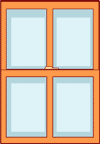
- 1) Use a 50/50 white vinegar water solution for normal dirt.
- 2) Use full strength warm vinegar for very dirty windows or windows that have dried paint or hard-water mineral spots.
Spray on the vinegar solution then wipe dry with a paper towel.
Alternatively, some people use crumpled up newspapers dipped in or sprayed with vinegar solution to wipe the glass, followed by a dry paper towel or crumpled up newspaper.
Why newspapers? Because they don't leave any lint behind, they are readily available, cheap and recyclable.
Another widely used vinegar formulation that is my favorite for cleaning windows, involves mixing white vinegar, water and rubbing alcohol(70%) as follows:
- 2 cups Water (500 ml)
- 1/2 cup Vinegar (125 ml)
- 1/4 cup Rubbing Alcohol (60 ml)
Those who use it claim that it works just like expensive commercial products and I certainly agree!
Patio, Sidewalk and Driveway Cracks - Cleaning with Vinegar
Cleaning with vinegar will remove the dirt and dark organic material that often accumulates with time on patio stones and will restore their original colors and luster.
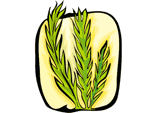
As well, it will control the grass and pesky weeds that tend to grow in the smallest of cracks or crevices in your outdoor patio, sidewalk or driveway.
Simply spray or pour distilled white vinegar onto the stones to clean, and into the cracks to kill unwanted weeds or grass and discourage further growth in the future.
The photo below, of a section of my backyard patio, shows how well a vinegar application cleaned the patio stones on the right compared to the stones on the left which were not treated.
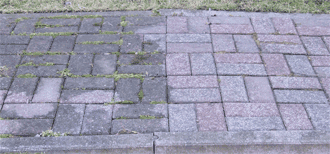
This will also discourage ants and other insects from building their nests there.
In these situations, the use of
vinegar as a weed killer
is both environmentally friendly and inexpensive.
